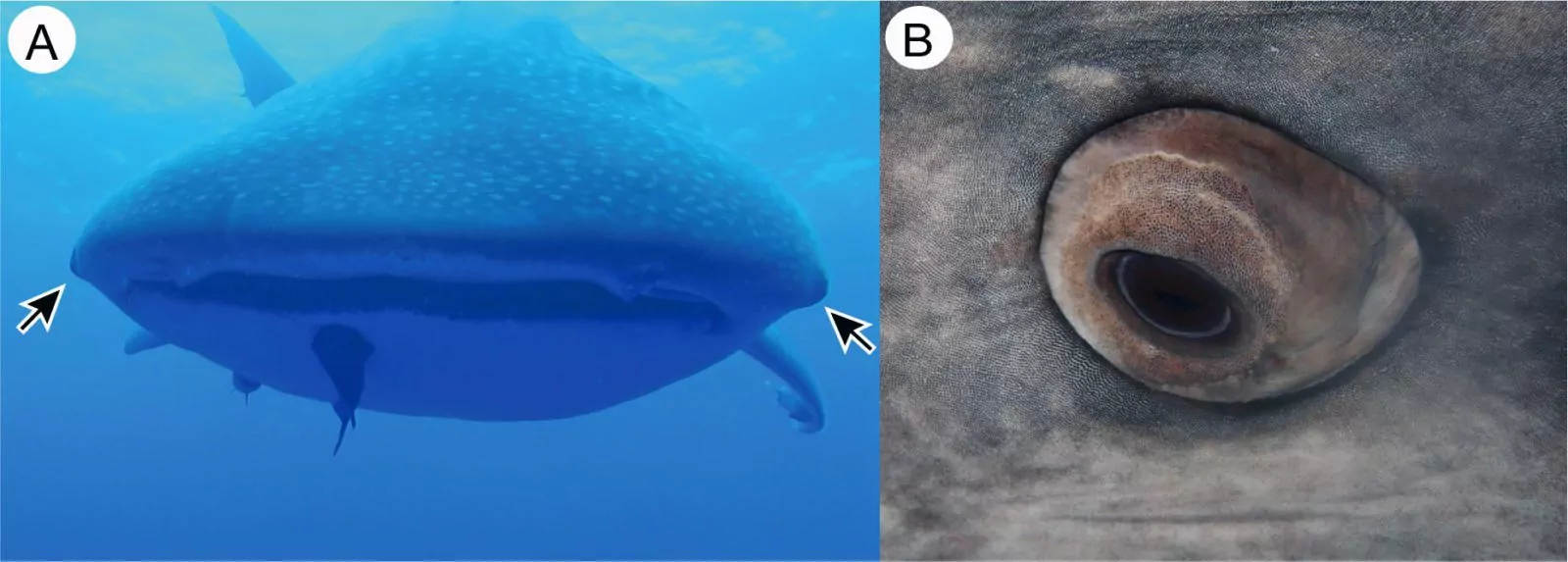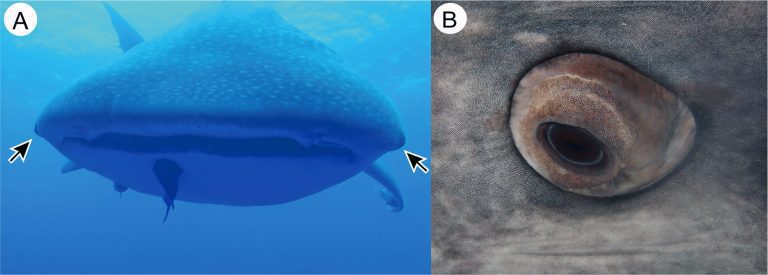DIVING NEWS
Eye-teeth protect whale sharks

In humans the “eye-teeth” are the upper canines, but new research suggests that the world’s biggest fish have eye-teeth in a more literal sense.
Whale sharks have been found to have tooth-like scales all over their eyeballs, a feature not noted before in any other vertebrate but, in the absence of eyelids, thought to keep the eyes safe from harm.
The Japanese researchers who have just reported on the finding say that whale sharks have evolved an eye covering made from tough “dermal denticles” similar to those that cover their entire bodies, and those of other sharks and rays.
These tiny scales are similar to teeth, based on a pulpy core encased in the bony tissue known as dentine, with an enamel-like outer coating. Designed for abrasion resistance, they offer protection against potential damage from “mechanical, chemical and biological hazards”.
Until now scientists had assumed that vision was unimportant for environmental perception in whale sharks, basing this on the small size of their eyes in relation to the body, and the small section of the brain allocated to sight. The level of protection afforded to the eyes now seems to suggest the opposite.
8 July 2020
The discovery was made by analysing ultra-sound recordings of captive whale sharks at the Okinawa Churaumi Aquarium, and CT scans of a preserved eyeball.
The scientists were also interested in how the sharks further seem to protect their eyes by retracting the eyeballs into the sockets, and now believe that they maintain a restricted view when they do this. The retraction distance was around half the diameter of the eye, so the pupils were not completely concealed.
Whale sharks normally retract their eyes only for short periods, but one specimen that had been transferred between aquariums in Taiwan and the USA had kept its eyes retracted for 10 days on arrival in Atlanta – yet appeared to have had no difficulty in navigating in that time.

